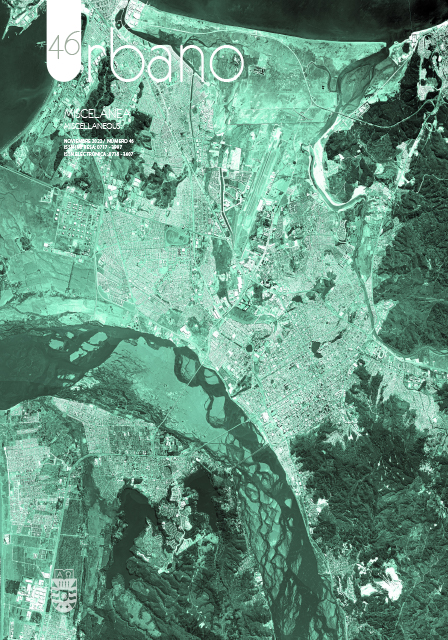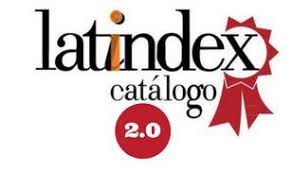Employment trajectories and economic specialization in the communes of the Ñuble Region in 1982, 1992, 2002, and 2017
DOI:
https://doi.org/10.22320/07183607.2022.25.46.02Keywords:
employment trajectories, economic specialization, co-functional evolution, system of citiesAbstract
The goal of this study was to analyze the changes that have taken place in the economic sectors in the system of cities between 1982, 1992, 2002, and 2017, alongside understanding the evolution and functional trajectory of employment in the Ñuble Region. The research approach is quantitative and applies a correlational design. The database was extracted from the 1982, 1992, 2002, and 2017 censuses of the National Institute of Statistics (INE, in Spanish) using the REDATAM program. Then, a principal component analysis (PCA) was performed using R software, shown through tables, graphs, and cartographies. The results indicate a trend that diversifies the region’s economic branches, evolving from agriculture toward commerce, services, education, and construction. The specialization indexes show a trajectory towards the homogenization of tertiary sectors and that, in a small number of communes, the primary sector represents a relevant part of local activity. In addition, from the decrease in agricultural and industrial employment, it can be concluded that the different communes of the region have a primary and tertiary vocation, recognizing a co-evolution between the different economic branches.
Downloads
References
ACUÑA, A., FAWAZ, J., HERRERA, R., REBOLLEDO, J., ROMO, R. Y UMAÑA, B. (2015). Caracterización de la provincia de Ñuble y una propuesta estratégica para el desarrollo del territorio. Concepción: Ediciones Universidad del Bío-Bío.
BRETAGNOLLE, A. (2021). Surgimiento y evolución del sistema de ciudades de los Estados Unidos de América. En Maturana, F. y Montoya, J. (Eds.), Sistemas urbanos en América Latina, el Caribe y Estados Unidos: un balance en los albores del siglo XXI (pp. 335-347). Bogotá: Editorial Universidad Nacional de Colombia.
DE MATTOS, C. (2002). Transformación de las ciudades latinoamericanas: ¿Impactos de la globalización? EURE, 28(85), 5-10. DOI: http://dx.doi.org/10.4067/S0250-71612002008500001
DE MATTOS, C. (2016). Financiarización, valorización inmobiliaria del capital y mercantilización de la metamorfosis urbana. Sociologías, 18(42), 24-52. DOI: https://doi.org/10.1590/15174522-018004202
DÍAZ, F. Y LOURÉS, M. (2003). La ciudad postfordista: economía cultural y recualificación urbana. Revista de Economía Crítica, (2), 105-121. Recuperado de
http://www.revistaeconomiacritica.org/sites/default/files/revistas/n2/6_ciudad_postfordista.pdf
DURANTON, G. Y PUGA, D. (2000). Diversity and Specialisation in Cities: Why, Where and When Does it Matter? Urban Studies, 37(3), 533-555. DOI: https://doi.org/:10.1080/0042098002104
FAWAZ, J. Y VALLEJOS, R. (2012). Calidad de vida, ocupación, participación y roles de género: un sistema de indicadores de sostenibilidad rural (Chile). Cuadernos de Desarrollo Rural, 8(67),45-68. DOI: https://doi.org/10.11144/Javeriana.cdr8-67.cvop
HIDALGO, R., DE MATTOS, C. Y ARENAS, F. (2019). Chile: del país urbano al país metropolitano. Santiago: GEOlibros N°12.
Instituto Nacional de Estadística [INE] (2017). Censo de Población. Santiago de Chile: INE. Recuperado de https://www.censo2017.cl/
LINDÓN, A, AGUILAR, M. Y HIERNAUX, D. (2006). Lugares de imaginarios en la metrópolis. Barcelona: Universidad Autónoma Metropolitana.
MARKUSEN, A. Y SCHROCK, G. (2006). The Distinctive City: Divergent Patterns in Growth, Hierarchy and Specialisation. Urban Studies, 43(8), 1301-1323. DOI: https://doi.org/10.1080/00420980600776392
MATURANA, F., PEÑA-CORTÉS, F., GASIC, I. Y SEPÚLVEDA, U. (2021) Trayectoria demográfica y funcional del sistema de ciudades chileno. En Maturana, F. y Montoya, J. (Eds.), Sistemas urbanos en América Latina, el Caribe y Estados Unidos: un balance en los albores del siglo XXI (pp. 61-80). Bogotá: Editorial Universidad Nacional de Colombia.
MATURANA, F., SEPÚLVEDA, U., PRADA, J., FUENZALIDA, M. Y STAFOLLERI, J. (2019). Trayectoria y coevolución funcional del empleo en las ciudades chilenas. Anales de geografía de la universidad Complutense, 39(2), 395-398. DOI: https://doi.org/10.5209/aguc.66943
MANERO F. (1998). Terciarización y desarrollo urbano en España. Significado funcional y espacial de las nuevas estrategias de promoción de la ciudad. Barcelona: Editorial Guillermo Morales.
MONTERO, L. Y GARCÍA, J. (2017). Panorama multidimensional del desarrollo urbano en América Latina y el Caribe. Santiago: Comisión Económica para América Latina y el Caribe. Naciones Unidas. Recuperado de https://www.cepal.org/es/publicaciones/41974-panorama-multidimensional-desarrollo-urbano-america-latina-caribe
Naciones Unidas (2021). Migración Internacional 2020. Nueva York: UN. Recuperado de https://www.un.org/en/desa/international-migration-2020-highlights
PAULUS, F. (2004). Coévolution dans les systèmes de villes: croissance et spécialisation des aires urbaines françaises de 1950 à 2000. Paris: Géographie. Université Panthéon-Sorbonne.
PAULUS, F. Y VACCHIANI-MARCUZZO, C. (2015). Knowledge industry and competitiveness: Economic trajectories of French cities since the 1960s. En Cusinato, A. y Philippopoulos-Mihalopoulos, A. (Eds.), Knowledge creating Milieus in Europe. Firms, Cities, Territories (pp.157-170). New York: Springer.
PÉREZ, M. (2019). Uno tiene que tener casa donde nació. Ciudadanía y derecho a la ciudad en Santiago. EURE, 45(135), 71-90. DOI: http://dx.doi.org/10.4067/S0250-71612019000200071
PICARD, P. Y ZENOU, Y. (2018): Urban spatial structure, employment and social ties. Journal of Urban Economics, 104, 77-93. DOI: https://doi.org/10.1016/j.jue.2018.01.004
PINO, F. (2006). Globalización, paisaje y vivienda rural. Revista de urbanismo de la Universidad de Chile, (14), 92-97. Recuperado de https://revistaurbanismo.uchile.cl/index.php/RU/article/view/5124
PRED, A. (1977). City-Systems in Advanced Economies: Past Growth, Present Processes, and Future Development Options. London: Hutchinson.
PUMAIN, D. (2018): An Evolutionary Theory of Urban Systems. En Rozenblat, C. Pumain, D. y Velásquez, E. (Eds.), International and Transnacional Perspectives on Urban Systems (pp. 3-18). Singapore: Springer.
PUMAIN, D. Y SAINT-JULIEN, T. (2001). Análisis Espacial Las Interraciones. Santiago: Serie GEOlibros Nº 21. Santiago: Instituto de Geografía-Pontificia Universidad Católica de Chile/ Facultad de Arquitectura.
REHNER, J. Y RODRÍGUEZ, S. (2017). Inversión inmobiliaria en tiempos de auge y crisis: ¿Es la ciudad un producto minero o un derivado financiero? Revista de Geografía Norte Grande, (67), 183-210. DOI: https://dx.doi.org/10.4067/S0718-34022017000200010
TURMO, J. Y MOSLARES, C. (2007). Chile. De la industrialización mediante sustitución de importaciones a la liberalización y diversificación comercial. Boletín Económico de ICE (2914).
Downloads
Published
How to Cite
Issue
Section
License
Copyright (c) 2022 Erick Solo de Zaldívar, Víctor Montre-Águila, Francisco Maturana-Miranda

This work is licensed under a Creative Commons Attribution-ShareAlike 4.0 International License.
The content of articles which are published in each edition of Habitat Sustentable, is the exclusive responsibility of the author(s) and does not necessarily represent the thinking or compromise the opinion of University of the Bio-Bio.
The author(s) conserve their copyright and guarantee to the journal, the right of first publication of their work. This will simultaneously be subject to the Creative Commons Recognition License CC BY-SA, which allows others to share-copy, transform or create new materials from this work for non-commercial purposes, as long as they recognize authorship and the first publication in this journal, and its new creations are under a license with the same terms.![]()























